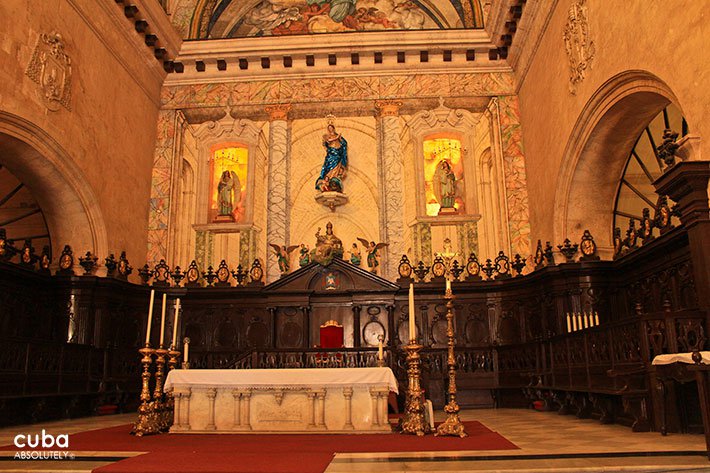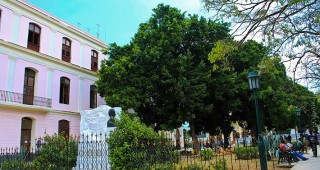
The entry of the Jesuits in Cuba was formally requested in 1656, and in 1727, a plot was granted for their school and church. Bishop Brother Gerónimo Valdés explained to the King of Spain that Havana’s Parroquial Mayor (main parish church) was “completely in ruins and its walls were crumbling,” and insisted on the need of another building “worthy of this city.”
In the middle of the construction works (1748-1750), the Jesuits were expelled from every Spanish possession by royal decree; consequently, they had to leave Cuba and their property as confiscated by the colonial Government. The works of the church were interrupted, as it was decided that the edifice would be dedicated to the main parish, which was completed in 1777. In 1782, the church was consecrated as the Cathedral of Havana, being officially confirmed in 1793.
To a large extent, part of the charm of this construction comes from its smart and balanced composition, as well as the contrast between its highly elaborated main façade and the extremely simple lateral one. Two towers, different in size, one on each side of the building, emphasize its Baroque style, which, perhaps due to the rustic materials that were used, is devoid of the profuse sculpted ornamentation so frequent in other cathedrals of the continent. Its square openings have been many times repeated on other Cuban buildings, this too being an element that departs from the classical edifices of those days.
Early in the 19th century, the baroque altars were replaced by neoclassical ones, urged by Bishop Espada, a fervent admirer of Neoclassicism and the original wood ceilings were plastered over. Its paintings, sculptures and gold- and silverwork were executed by the Italian masters Bianchini and Guiseppe Perovani. The eight large paintings by Jean Baptiste Vermay are copied from originals by Rubens and Murillo. Note that despite the official opening times, the cathedral is often locked, though you can sometimes gain access just before mass.
Opening hours detail: 10:30am-3pm Mon-Fri; 10:30am-2pm Sat; 9am-noon Sun
Mass: 7:15am Mon, Fri in the adjoining chapel; 8:15pm Tues, Thu; 5:30pm Sat; 10:30am Sun.










 Other
Other








